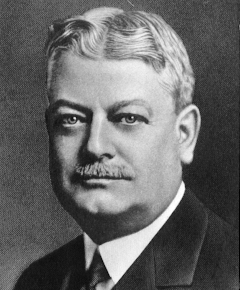Our series on Colorado’s governors continues with William E. Sweet, Colorado’s 23rd governor. Governor Sweet served one term from 1923-1925.
Early Life

William Ellery Sweet was born in Chicago on January 27, 1869. In 1872, Sweet’s family moved to Colorado Springs, where he lived until finishing high school. Sweet graduated from Swarthmore College in 1890 and remained in Pennsylvania for a few years afterward.
Two years after graduating, Sweet married Joyeuse Fullerton and they moved back to Colorado. Sweet started a successful investment banking firm in Denver, becoming very wealthy and retiring from his career in finance in 1920, at around 40 years old.
Sweet donated liberally to philanthropic and humanitarian organizations. Notably, he was involved with the development of the Denver YMCA and helped to fund the construction of the YMCA building in downtown Denver.
Political career
Sweet inherited an interest in politics from his father, Channing Sweet, who ran for various state offices on the Socialist ticket. The younger Sweet became active in Colorado’s Democratic Party after his retirement and was elected governor in the 1922 election. His support largely came from farm workers and the organized labor movement.
Sweet was part of Colorado’s Progressive political movement, and this political vision was clear in his actions as governor. Sweet made good on his campaign promise to disband the Colorado Rangers, a state police organization that was known for breaking up strikes and threatening union organizers. After Senator Samuel D. Nicholson died in office in 1923, Sweet replaced him with fellow progressive Alva B. Adams, bringing their shared mission to oppose child labor and support the rights of workers to organize to the national legislature. More information and resources about Colorado Progressivism can be found here.
Sweet lost his bid for re-election in 1924. His loss is attributed to his opposition of the racist ideologies of the Ku Klux Klan, which had capitalized off the hyperpatriotism following World War I to enroll more than 30,000 new members in Colorado during Sweet’s term and gain massive influence in Colorado’s politics. Sweet also made two unsuccessful runs for the United States Senate in 1926 and 1936.
Life after politics
Sweet became a supporter of the New Deal and moved to Washington D.C. in 1933 to work for President Franklin D. Roosevelt’s administration as a public relations officer for the National Recovery Administration and for the Resettlement Administration. Sweet was active in the Congregational Christian Church throughout his life, and in the year before he died he delivered fifty addresses for the church. Governor Sweet died in Denver on May 9, 1942 and is buried in Fairmount Cemetery.
- Celebrating Colorado’s immigrant heritage - June 27, 2025
- Colorado’s Scenic and Historic Byways: Guanella Pass - June 6, 2025
- Who is protecting Colorado’s pollinators? - May 16, 2025